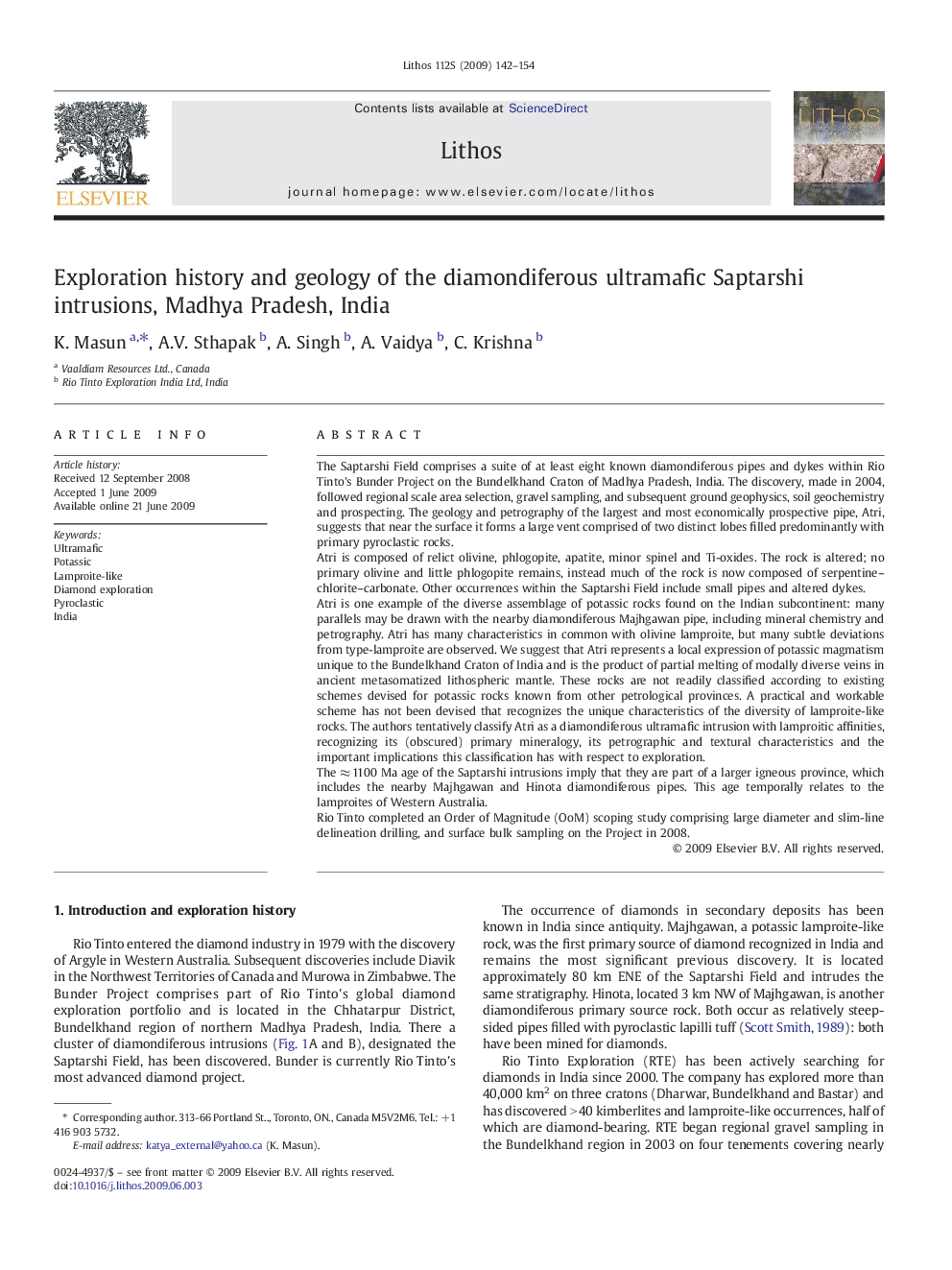| Article ID | Journal | Published Year | Pages | File Type |
|---|---|---|---|---|
| 4717255 | Lithos | 2009 | 13 Pages |
The Saptarshi Field comprises a suite of at least eight known diamondiferous pipes and dykes within Rio Tinto's Bunder Project on the Bundelkhand Craton of Madhya Pradesh, India. The discovery, made in 2004, followed regional scale area selection, gravel sampling, and subsequent ground geophysics, soil geochemistry and prospecting. The geology and petrography of the largest and most economically prospective pipe, Atri, suggests that near the surface it forms a large vent comprised of two distinct lobes filled predominantly with primary pyroclastic rocks.Atri is composed of relict olivine, phlogopite, apatite, minor spinel and Ti-oxides. The rock is altered; no primary olivine and little phlogopite remains, instead much of the rock is now composed of serpentine–chlorite–carbonate. Other occurrences within the Saptarshi Field include small pipes and altered dykes.Atri is one example of the diverse assemblage of potassic rocks found on the Indian subcontinent: many parallels may be drawn with the nearby diamondiferous Majhgawan pipe, including mineral chemistry and petrography. Atri has many characteristics in common with olivine lamproite, but many subtle deviations from type-lamproite are observed. We suggest that Atri represents a local expression of potassic magmatism unique to the Bundelkhand Craton of India and is the product of partial melting of modally diverse veins in ancient metasomatized lithospheric mantle. These rocks are not readily classified according to existing schemes devised for potassic rocks known from other petrological provinces. A practical and workable scheme has not been devised that recognizes the unique characteristics of the diversity of lamproite-like rocks. The authors tentatively classify Atri as a diamondiferous ultramafic intrusion with lamproitic affinities, recognizing its (obscured) primary mineralogy, its petrographic and textural characteristics and the important implications this classification has with respect to exploration.The ≈ 1100 Ma age of the Saptarshi intrusions imply that they are part of a larger igneous province, which includes the nearby Majhgawan and Hinota diamondiferous pipes. This age temporally relates to the lamproites of Western Australia.Rio Tinto completed an Order of Magnitude (OoM) scoping study comprising large diameter and slim-line delineation drilling, and surface bulk sampling on the Project in 2008.
